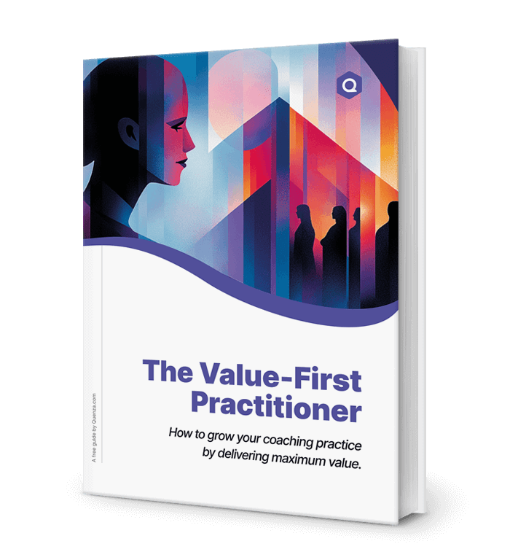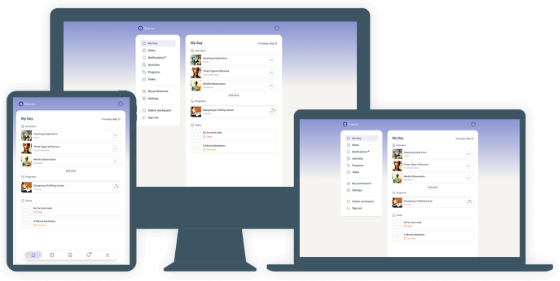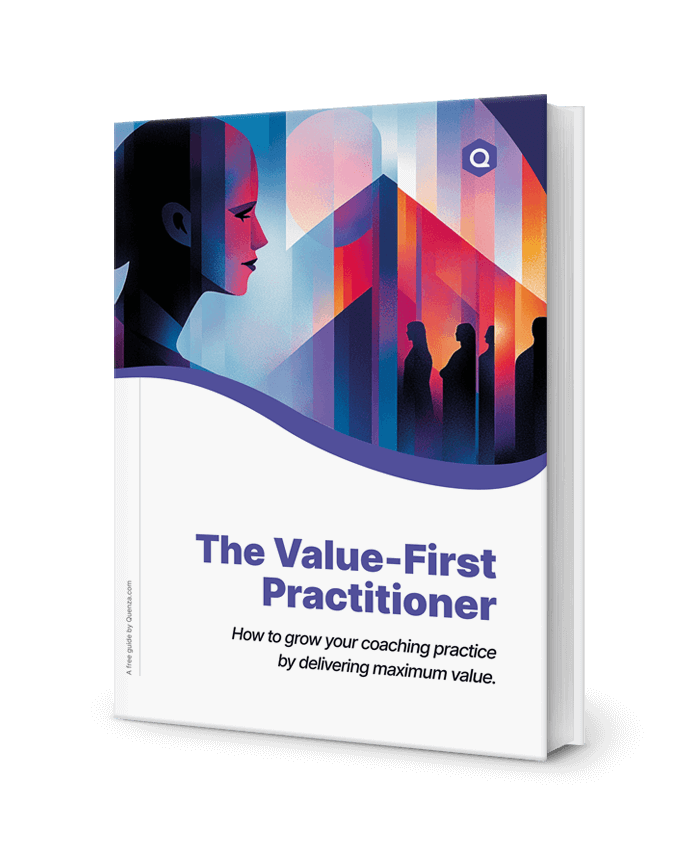Navigating recruitment and advancement in an MBA program offers both exciting opportunities and complex decision points. With expanded expertise and networks, nearly limitless possibilities await – from global consulting roles to product leadership at tech startups. However, fierce competition also surrounds the most prestigious openings at top companies.
Through thoughtful personal brand development, tactical networking and diligent interview preparations, MBA students can stand out to recruiters and Evaluate Your Career Goals and Skills their full leadership potential. This requires understanding precisely how hiring managers at target employers assess talent. It also involves crafting a career story – through resume details, online profiles and interview anecdotes – that persuades evaluators you offer the right blend of experiences, cultural fit and future potential to excel in roles of high interest.
Evaluating Your Career Goals and Skills
An MBA opens doors across industries, so first take time for self-reflection on what truly motivates you in a career. Look beyond job titles and prestige to consider what work environments and day-to-day responsibilities resonate. Talk to mentors and advisors to gain perspective on how your strengths align to roles. An MBA gives flexibility, but focus your search on paths fitting your passions.
Assessing Your Hard and Soft Skills
Catalog your expertise gained from past experiences, like analytical problem-solving or empathy when assisting customers. Recognize abilities utilized regularly that translate to business settings, from collaborating across teams to designing visually appealing materials. Understanding your skill set helps determine industries and functions that offer the best fit.
Additionally, note areas you want to develop. An MBA program expands capabilities through group projects, presentations, business case analyses and more. Maximizing these opportunities during your studies tailors your skillset to roles of interest post-graduation.
Exploring Potential Career Paths
Once aware of your strengths and interests, research job possibilities to unveil promising paths. Talk to alumni working in appealing industries to learn typical responsibilities and challenges. Review listings for roles you may enjoy to understand valued credentials and previous experiences. This exploration provides direction on how to stand out for relevant opportunities.
Assess aspects of roles you prefer, like collaborating cross-functionally, taking charge of your own projects or managing others. Determine if you want to influence strategy or lead execution, handle analytics or guide relationships. Establishing preferences helps secure positions involving your favored activities and work environments.
Gauging the Marketability of Your Background
With clearer goals, compare your current brand to credentials valued in target industries and companies. For example, entrepreneurship experience proves useful in consulting, while specialization in healthcare sets up pivots into pharmaceutical roles. Recognizing gaps informs the focus areas and optional courses to pursue during your MBA.
Additionally, research hiring timelines and cycles. Consulting and investment banking recruit early, while Fortune 500 roles and startups onboard year-round. Tailor your studies and job search strategy accordingly so you engage target employers at optimal times.
| Industry | Valued Credentials & Experiences | Hiring Timelines |
|---|---|---|
| Investment Banking | Financial modeling, business valuation, previous internships | Mostly limit recruitment to specified MBA internship cycles |
| Management Consulting | Leadership capabilities, strategic problem-solving, cross-sector experiences | Place heavy emphasis on highly structured MBA internship programs for full-time positions |
| Tech | Technical fluency, ability to understand user needs and guide product decisions | Often onboard MBA talent year-round |
Crafting an Intentional Job Search Strategy
With an understanding of your goals and qualifications, create a strategy guiding your studies, extracurriculars and recruiting efforts. Set tangible objectives, like joining a healthcare case competition to boost industry knowledge ahead of summer internships. Also build online profiles representing your added capabilities and interests to become discoverable by relevant employers.
Regularly reevaluate progress and pivot plans if needed. An intentional approach helps prove to recruiters you offer the precise blend of experiences and abilities valued in roles of interest post-graduation.
Researching Industries and Companies of Interest
Conduct thorough research on industries aligned to your interests to determine promising options post-graduation. Review industry reports from trusted sources to learn expected growth rates, competitive landscapes, position availabilities and typical salary ranges.
Additionally, network with alumni through industry-specific clubs and events to gain insider perspectives on job responsibilities, challenging aspects and day-to-day life. Ask about critical skills needed to excel and strategies for pivoting from other sectors.
Researching High Potential Companies
Once aware of appealing industries, compile a list of target companies renowned for strong training, leadership development and promotion of MBAs. Search rankings like Glassdoor’s Best Places to Work lists and Vault’s annual MBA surveys to find well-rated options.
Study companies’ websites to learn their mission, culture, business model and brand image. Follow key executives on LinkedIn and social media to gain exposure to their leadership style and strategic vision. Understanding a company’s ethos and priorities helps assess your alignment to their workplace.
Researching Open Positions
Search online job boards and company career sites for current openings requiring or preferring MBA credentials. Note responsibilities, must-have qualifications and helpful experiences to become aware of precise needs in roles of interest across various businesses.
Pay attention to language indicating company priorities – for example, some may request Digital Transformation experience highlighting their focus on technology-driven change, while others ask for Global Mindset showing an emphasis on worldwide collaboration.
Compare requirements to your background and create plans to develop targeted skills through future coursework and extracurriculars if gaps exist.
Connecting with Industry Insiders and Company Reps
Build relationships with individuals working in appealing positions and businesses through campus visits, conferences, informational interviews and alumni networking platforms.
In discussions, inquire about suggestions for strengthening candidacy for relevant openings based on precise company needs. Over time, nurture these relationships to gain valuable referrals and insider advice once ready to apply.
Crafting Your Resume and Online Presence
With clear career goals identified through self-assessment and research, update your resume to align with specific target roles. Emphasize experiences, projects, skills and results demonstrating capabilities critical for positions of interest.
For example, highlight leadership experiences if pursuing consulting, or detail analytics coursework and technical skills for data science roles. Reference industry research to use key words and terminology from relevant job descriptions throughout your resume.
Additionally, tailor the document for applicant tracking systems used by target employers. Incorporate acronyms, keywords and phrases from online postings to boost chances of being flagged by algorithms as a potential match.
Developing Multiple Resume Versions
Consider developing multiple versions of your resume, each aligned to different types of roles to convey relevant credentials at a glance. For example, create one version highlighting your international experiences for global positions, and another emphasizing analytical skills for finance opportunities.
When applying, tweak details in the Professional Experience and Skills sections to fit precise position requirements. Always reference the specific job description to determine the most important qualifications and capabilities to showcase upfront.
Building an Online Presence
Beyond a strong resume, develop robust online profiles representing your personal brand and demonstrating thought leadership to recruiters and hiring managers. For example, establish a LinkedIn presence featuring professional headshots, a customized background banner, and a summary section conveying your value proposition and goals.
Additionally, build a website or digital portfolio conveying your leadership philosophies, key experiences, specialization areas, and growth interests. Use this space to provide work samples demonstrating capabilities relevant to target roles, like presentations, reports, analytics models or prototypes.
Engaging on Relevant Online Platforms
Actively engage on industry forums and in relevant LinkedIn groups to establish subject-matter expertise and thought leadership. Share informed perspectives on business challenges and emerging issues to exhibit your understanding of specific fields. Comment on posts from respected industry accounts and figures to increase visibility.
You can also contribute original articles or analyses to student-run MBA blogs and publications. Tailored writing samples and projects on your website also act as endorsements showcasing your abilities to key audiences of recruiters and hiring managers.
Monitoring Your Personal Brand
Consistently review online content associated with your name across various platforms to ensure alignment with target professional brands. For example, modify privacy settings for old social media accounts not representing your capabilities or interests today.
Additionally, engage networks for endorsements and recommendations highlighting relevant experiences, knowledge areas, leadership capabilities, communication abilities and other strengths valued by potential employers. These credible third-party validations help strengthen your qualifications when reviewed by recruiters.
Ensuring Consistent Personal Branding
Maintain consistency across online profiles and platforms to reinforce your personal brand and prevent confusion. For example, use the same professional headshot and summary of your background, experiences and goals everywhere. Consider developing a short “About Me” description you can reuse across websites and profiles.
Also ensure uniformity in details like LinkedIn headline, website bio, and how you describe key experiences, credentials, and focus areas on your resume. Consistency strengthens your brand recognition and discoverability by relevant audiences.
Preparing for Interviews and Assessments
Through conversations with alumni, career services and review of employment reports, become aware of typical hiring processes across target industries and companies. For example, consulting roles often start with a screening call, followed by three rounds of case or behavioral interviews over 4-6 weeks.
Tech recruitments may begin with a coding test or portfolio review, with final decisions made within only 2-3 weeks. Knowing timeframes and sequences helps properly pace your preparation efforts.
Practicing for Interviews
Complete extensive practice interviewing to master speaking confidently about your background, skills and motivations. Schedule mock video interviews with career advisors to gain feedback on poise, clarity and conciseness of responses.
Also participate in peer mock interview events to field a wide variety of common and offbeat questions. Record responses to review body language, vowel fillers (“um”, “like”) and ability to keep answers targeted. Create an answers bank to easily reference winning examples proving your qualifications.
Preparing for Standard Interview Questions
Expect interviewers to assess motivation for the role, leadership abilities, collaboration skills, analytical prowess, and interest in the company and industry. Prepare stories highlighting when you drove business results, overcame conflicts, took smart risks and managed complexities.
Additionally, articulate why the company and position aligns to your passions, strengths and development areas. Comment thoughtfully on business challenges highlighted in company reports to exhibit your strategic perspective.
Tackling Case Interviews
For consulting or strategy roles requiring case interviews, dedicate extensive time to building fluency in the process. Master approaches for breaking down problems, asking clarifying questions, structuring analyses, and communicating recommendations.
Practice estimating figures on the fly when data is not provided. Discuss assumptions upfront and think aloud so interviewers following your logic. Stressing quantitative skills and business sense, not calculations, impresses evaluators.
Passing Technical Assessments
Prepare for tech recruitment screenings potentially including algorithm questions, coding assignments and skills tests. Use platforms like LeetCode, HackerRank and Qualified to tackle the same level of problems asked by target employers. Refresh knowledge of preferred programming languages like Python or JavaScript.
You may also face assessments to demonstrate Excel modeling expertise, statistical capabilities or product management thought processes. Practice case-based and situational judgement tests to prove abilities to prioritize tasks, interpret data insights and guide decisions.
Handling Behavior-Based Questions
Many interviewers will probe past behaviors to understand your likelihood of success in roles. Solidify a portfolio of accomplishments demonstrating leadership impact, customer empathy, collaboration skills and business results. Quantify achievements like dollars raised, efficiencies gained and sales lifted whenever possible.
Frame responses using the STAR method – Situation, Task, Action Result – to convey challenges faced, your contributions, and key outcomes achieved. This storytelling approach makes your capabilities memorable and relatable.
Asking Insightful Questions
The interview also offers a chance to assess your alignment with the company culture and priorities by asking thoughtful questions. Inquire about immediate priorities in the role and how success will be measured over the first 6-12 months. Also ask about managerial expectations of candidates in their first year regarding key projects, milestones or rotations.
This shows initiative while allowing you to gauge the level of training, mentorship and support provided. Read cues about company culture from interviewers’ transparency, flexibility and attitudes when responding.
Securing References and Recommendations
References from past supervisors, professors and mentors help back qualifications in competitive recruitments. Ideally, they highlight strengths aligned to responsibilities required in the target role. Notify them each time you expect a reference check call or email.
Also request written recommendations for LinkedIn and online portfolios, emphasizing successes in key capability areas like analytics, leadership, decision-making and communication. These credible testimonials from respected professionals boost your personal brand.
Deciding Between Job Offers
When deciding between opportunities, carefully compare expected responsibilities across positions to determine the best match for your skills and interests. Review job descriptions and notes from interviews to create a side-by-side analysis of day-to-day activities, key projects, learning opportunities and performance metrics.
For example, highlight client-facing aspects in consulting roles versus internally focused analytics tasks in finance positions. Also note variations in work environments, workplace culture, travel requirements and work-life balance policies.
Assessing Company Culture and Values
Evaluate organizational culture and leadership approaches at each employer to gauge your likely engagement and development there. Reflect on recruiter and hiring manager attitudes, flexibility and transparency during interviews and negotiations. Seek insider perspectives from current employees, alumni or Glassdoor company reviews.
As you determine culture alignment, prioritize environments demonstrating genuine support for staff growth. Signs include formal mentorship programs, employee resource groups, learning stipends and clear promotion paths.
Evaluating Location, Compensation and Benefits
Factor geography, base salary, annual bonuses and benefits into your calculations across offers. Consider preferences around climate, access to amenities, proximity to family and friends, and cost of living.
Also carefully compare health insurance, retirement contributions, tuition reimbursement, vacation time, family leave and remote work policies. Weigh total compensation and non-salary perks according to your lifestyle needs and priorities.
Gauging Advancement Opportunities
Research typical career progressions at each employer through discussions with mentors and reviews of alumni LinkedIn profiles and company promotion data. Assess the likelihood of securing your dream role in 3-5 years based on hiring volumes, turnover rates, and mobility across business units and geographies.
During final-round interviews, inquire directly about advancement trajectories with questions like: “What capabilities are key for rising to senior manager within four years?” This data helps determine which employer provides the best launchpad for your long-term aspirations.
Identifying the Right Risk Profile
Factor risk and job security into considerations, as some roles and companies offer more stability than others. For example, large enterprises promise scale and resources but can mean slower career progression and role changes.
Startups provide exposure and responsibilities driving P&L impact, but have higher failure risks. Determine your risk appetite and how fixed your near-term professional goals are to make the right tradeoffs.
Trusting Your Instincts
In assessing complex job dimensions across multiple offers, also listen to your instincts and emotions, not just rational calculations. Pay attention to visceral excitement or anxiousness about specific work environments, teams or projects during final interviews.
These intuitive reactions provide signals about culture alignment and development opportunities difficult to discern otherwise. Trust your gut feelings in conjunction with pragmatic assessments to make the best choice.
Landing a Job and Transitioning Successfully
Before accepting an offer, clarify outstanding questions on start dates, required paperwork, relocation support and onboarding plans. Request an official offer letter detailing compensation components like base salary, signing bonus, annual incentives and equity compensation. Thoroughly understand tax implications of any restricted stock units or stock options.
Also confirm policies around remote work flexibility, expense reimbursements and vacation days. Ask about technology support provided, like laptop specifications, required software, stipends and replacement cycles. Resolving logistics upfront ensures a smooth transition into your new role.
Resigning From Current Position
When committing to an opportunity, professionally notify your manager first before broader announcements. Share appreciation for opportunities received and skills gained. Offer substantial notice period (e.g. three weeks) to transition projects and document knowledge.
Also inform key stakeholders like team members, clients and mentors through meetings or emails. Express gratitude for their support in reaching this next step aligned to your long-term goals. This thoughtful closure maintains strong relationships for the future.
Preparing for Onboarding
Prior to Day 1, complete any required forms, equipment requests and compliance training to unlock system access and resources. Set up meetings with manager, mentor, tech support and HR to accelerate getting fully equipped and productive.
Study available org charts, product info, strategy presentations and recent financials to contextualize your role. Research team members to craft informed introductions showcasing shared interests, credentials or networks.
Mastering First Impressions
In initial encounters with colleagues, focus on listening first before asserting your perspectives or past experiences. Invest time understanding nuances around team dynamics, critical projects, and organizational values to assimilate sensitively.
Offer availability for ad-hoc questions and schedule regular check-ins with your manager. Proactively seek opportunities to contribute by adding value where gaps appear, not just completing assigned tasks.
Clarifying Performance Expectations
Schedule skip-level meetings with department leads to introduce yourself and learn broad priorities. Revisit formal job descriptions provided and incorporate additional context from recent interviews on success metrics over the first year.
Draft realistic quarterly OKR goals aligning individual development needs to wider business objectives. Discuss plans with your manager and request feedback to ensure you build capabilities strategically critical for advancement.
Expanding Your Network
At onboarding events and trainings, make focused efforts to meet leaders from business functions central to your work. Introduce yourself as a collaborative partner committed to amplifying their impact through your contributions.
Schedule coffee chats or virtual intro calls to establish rapport then follow-up with personal notes after each encounter. These relationships provide support navigating political dynamics while offering insight into innovation opportunities.
Charting a Progression Pathway
During quarterly career development discussions, align on skills and experiences needed to earn promotions to roles of interest in the next 3-5 years. Investigate job profiles of current team members 2-3 levels above you to understand key milestones and natural stepping stones.
Proactively create 2-year rotation plans across teams, markets or projects to deliberately gain breadth. This showcases ambition while positioning you for accelerated leadership progression.
Conclusion
With expanded expertise and networks from an MBA program, nearly limitless possibilities await for advancing your career. However, in navigating complex decision points during recruitment and job searches, a thoughtful approach proves critical. Through intentional personal brand development, tactical networking, and diligent interview preparations, you can evaluate options aligning to your true passions and strengths.
By understanding precisely how hiring managers assess talent and leadership potential, you can craft a compelling career story. Emphasize experiences, skills and results demonstrating your readiness to drive strategic impact. With a balanced assessment of risk, advancement trajectory, and culture fit across opportunities, you can secure roles allowing you to maximize both your contributions and your own leadership growth.
Frequently Asked Questions
Assess job responsibilities, leadership development and culture fit at highly-rated companies known for strong MBA hiring and advancement. Reference rankings and alumni insights to identify top employers renowned for workplace satisfaction and promoting graduates into leadership roles. Analyze open positions and typical first-year responsibilities at target firms to gauge alignment to your skills, interests and values.
Leverage extensive services from your career center for personalized guidance tailoring your preparation approach. Schedule individual resume reviews and mock video interviews for constructive feedback. Attend peer group sessions to practice diverse interview styles and questions. Also utilize school career platforms providing inside perspectives on recruitment processes and insights from past candidates.
Catalog past experiences demonstrating leadership behaviors, analytical skills, collaboration abilities and business impact desired in your target role. Quantify key results like dollars saved, deals closed or process efficiencies gained. Emphasize complex business challenges overcome through strategic solutions you developed and drove adoption for, over individual technical contributions. Structure responses using the STAR method highlighting the Situation faced, Task owned, Actions taken, and Results achieved.
Schedule introductory meetings with your manager, mentor, key team members and department leads during onboarding. Probe to understand nuances around team dynamics, organizational values, and critical project gaps needing support. Offer availability for questions and seek opportunities to immediately contribute insights. Proactively develop quarterly OKR goals aligned to individual development needs and wider business objectives.
Showcase leadership perspectives and subject matter expertise by actively engaging in industry forums and publishing commentary on emerging issues. Contribute to company blogs, magazines, and student publications relevant to your target field. Pursue high-visibility rotations, committee roles, and stretch assignments. Discuss specific capabilities required for advancement roles of interest during career development discussions.



